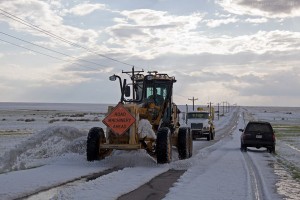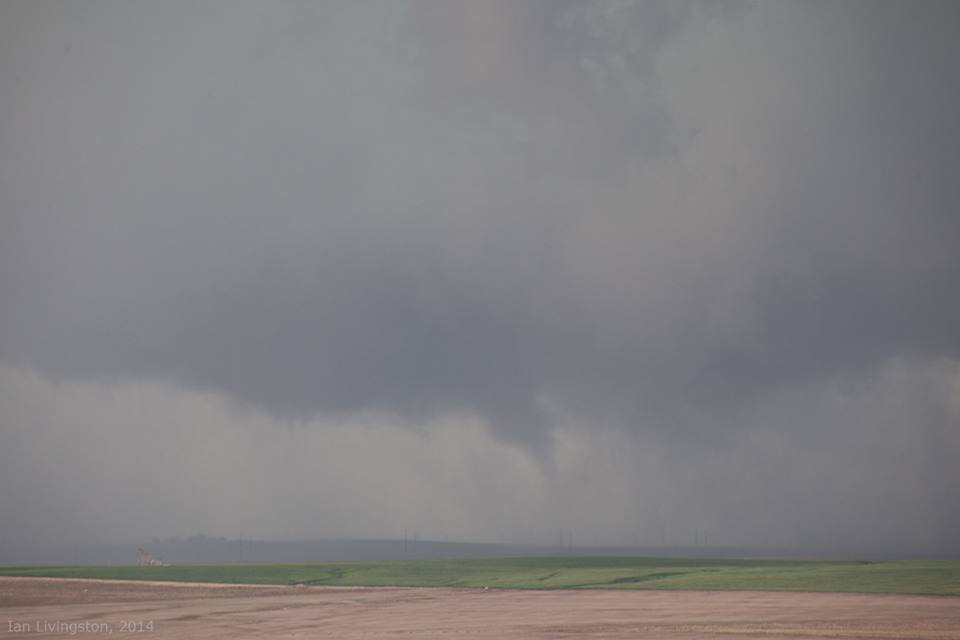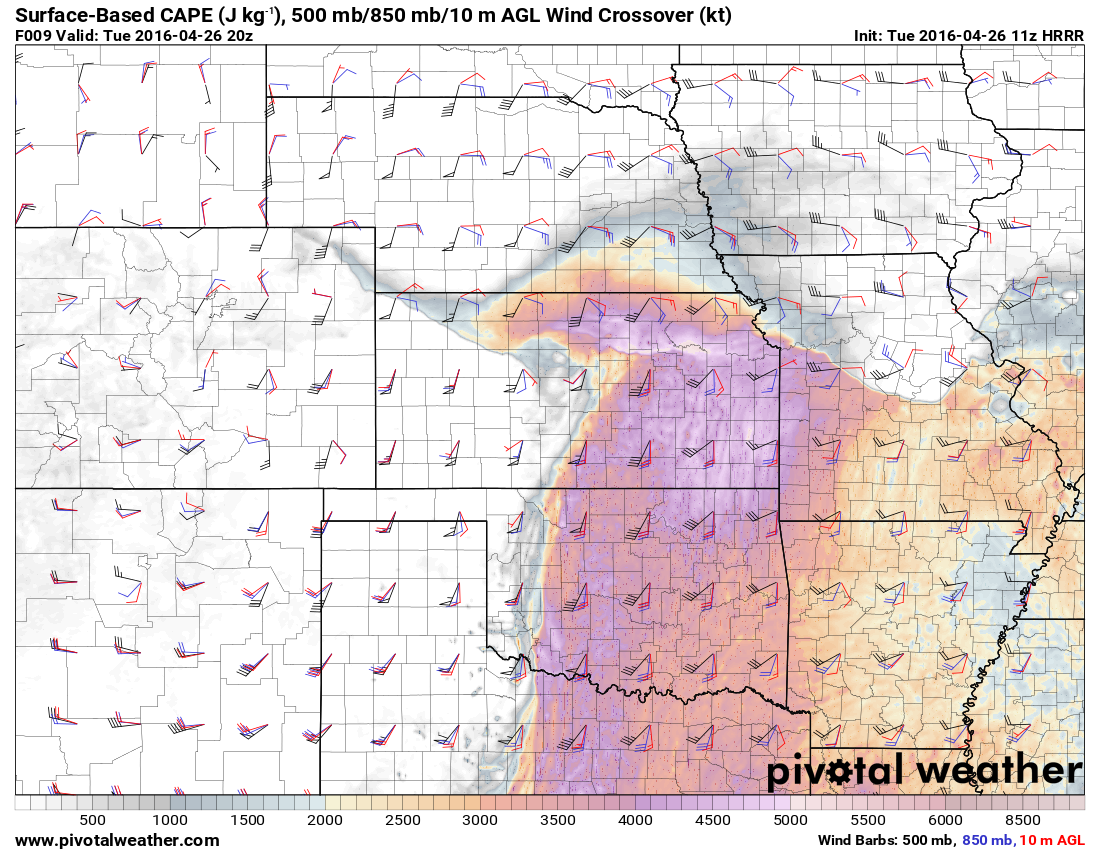
Yesterday’s chase brought us to the Denver, CO area, along with about 1,000 other chasers and tour groups. The storm was beautiful, but spent most of its life as a high precipitation (HP) beast of a storm, with rain wrapping around the circulation and obscuring the view of any possible tornadoes. We were in the perfect spot northeast of the circulation to look into the notch, but given our distance of several miles from the circulation (which is exactly where we wanted to be), it was still difficult to see anything.
We dropped south as the storm started to cycle and caught the second rotating wall cloud before rain once again blocked our view of the circulation. After following the only good east road to keep up with the storm for awhile, we bailed early and got in position for today’s storms. On our way, we noticed fields covered in hail in the distance, so we went north to check it out. Hail was 3-4 inches deep in the roads, and there was a fair amount of flooding and minor washouts. The temperature dropped as low as 39F and the winds were howling, so it was a strange, unique and very cold post-storm experience for us.

Today doesn’t look particularly exciting given the low shear, but we are going to try to get on some storms in the eastern New Mexico/Texas Panhandle region.
Latest posts by Mark Ellinwood (see all)
- Spring 2023 seasonal tornado outlook - March 1, 2023
- Spring 2022 seasonal tornado outlook - March 1, 2022
- Spring 2021 seasonal tornado outlook - March 1, 2021

I have to ask this question: Do storm chasers ever collect and study hailstones? I’m not sure if their vehicles carry freezers or similar equipment for keeping them cold, or if the hailstones are dissected and photographed on location. I’m thinking about one book for young readers about the weather which I read decades ago which had a drawing of a youngster cutting open a hailstone with a cleaver while wearing a saucepan. (As I recall, the text read something on the line of “Cover your head so you don’t get hurt!”) After doing so, one could discern how many trips through the storm cloud a hailstone made (as per the theories of hail formation which were prevalent when the book was written–around 1951 or so). Some of those hailstones might have some interesting tales to tell!